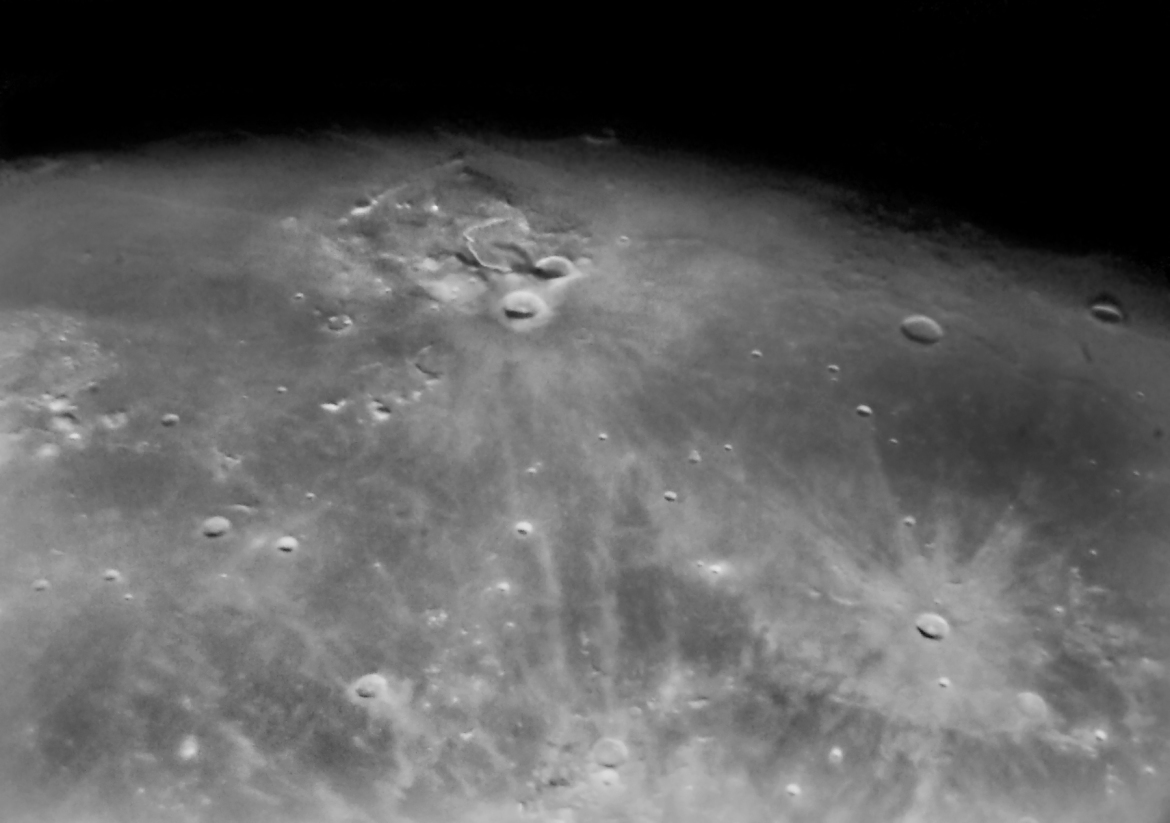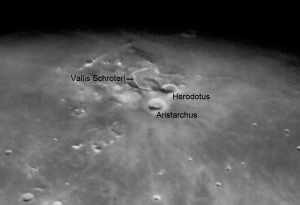Not wanting to pass up a rare clear night, and despite the cold temperatures, I got out with my telescope and began with a below average view of the Orion nebula, due to light pollution from both the city and moon. I then went on to a spectacular view of Jupiter. The bands were detailed and the moons looked like little disks at 180x in my scope. Jupiter is always fascinating through a telescope, with the parade of constantly changing moons and the cloud bands swirling though new patterns all the time. I am looking forward to the upcoming months when Jupiter will be better placed and visible every night. Finally, I turned to the moon, as it was unavoidable on a night like tonight.
Nearly full, it was very bright and the terminator (the line separating the light from the dark sides of the moon) was near the limb. Not always the best phase to observe the moon, there was one region that immediately caught my eye. A region with craters, mounds and valleys stood in sharp relief and held my attention. Since it was a small region (or at least looked small from my perspective), I knew that it wouldn’t show up well in a photo of the whole moon, like the ones I enjoy taking by attaching my camera directly to my telescope. Still wanting to capture this rich detail, I pointed my point-and-shoot camera through an eyepiece in a method called ‘afocal photography’. I used a 7mm orthoscopic eyepiece which delivers a very bright and clear image. It’s not a great photo, but it will serve as a nice reminder of the beautiful view I had tonight.
The craters Aristarchus and Herodotus are labeled in the second image (a cropped copy of the first photo, with labels quickly added on by me). Winding along the lunar surface and stretching away from these craters is the Vallis Schroteri, a valley up to 10 kilometers wide. It showed up so clearly, the valley walls catching the sunlight, and standing out against the surface of the moon which seemed dimmed because the sunlight was striking the surface from such a low angle there.
It all just goes to show that even on a night with a bright moon washing out the sky, there is always something amazing to see. Yes I was cold (and when I carried my telescope back inside an hour later, the metal tube of the scope was very cold!), but it was so worth it. Don’t miss out on the next clear night; you might see something just as amazing!



